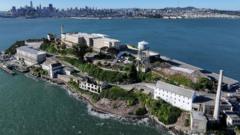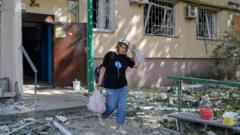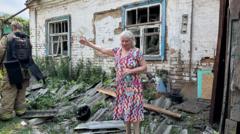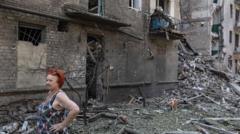**Formerly a notorious federal facility, Alcatraz remains a complex issue with modernization challenges that seem insurmountable.**
**Trump's Alcatraz Reopening Proposal Faces Harsh Realities**

**Trump's Alcatraz Reopening Proposal Faces Harsh Realities**
**Experts Doubt the Viability of the Plan to Revive the Historic Prison**
The U.S. President's audacious plan to revive Alcatraz, the infamous prison once home to notorious criminals, has garnered significant attention but faces a skeptical reception from experts. Donald Trump recently reiterated his vision of turning the iconic San Francisco Bay island back into a federal prison, claiming it could serve as a bastion for law and order amidst rising crime. Nevertheless, critics have pointed out the daunting logistical and financial challenges of revitalizing the still decaying structure, which has stood dormant since its closure in 1963.
Initially constructed as a military fortification, Alcatraz transformed into a federal penitentiary in 1934, famously housing figures like Al Capone and George Kelly. The prison's closure stemmed from financial impracticalities; it was almost three times more expensive to operate than other federal prisons, partly due to its remote location. Today, it serves as a museum, attracting over 1.4 million visitors annually.
Trump reignited interest in the site during an announcement earlier this month, explaining it represents a crucial element in addressing crime rates. He suggested that the prison could potentially house violent offenders, reaffirming its status as a symbol of strength. Nonetheless, following Trump's proposal, experts expressed disbelief, emphasizing the extreme repairs that would be needed to make the location viable for modern use.
Hugh Hurwitz, a former acting director of the Bureau of Prisons, deemed the reopening as improbable. He stressed the facility's dire condition—including deteriorating buildings, inadequate security, and outdated infrastructure—which includes critical issues regarding sewage management. Others, like historian Jolene Babyak, highlighted the impracticability of managing sanitation given today's environmental standards.
In earlier discussions about reopening, Alcatraz was considered during the Reagan administration for housing Cuban refugees but was ultimately ruled out due to its lack of modern facilities. Current estimates suggest that operating costs would skyrocket, potentially exceeding $500 per inmate, a figure that starkly contrasts with contemporary federal prisons.
As the conversation unfolds, the consensus remains that while revisiting the storied history of Alcatraz may capture public imagination, the operational realities of converting it back to a prison are virtually non-existent. Experts agree that the proposition may represent more of a political statement than a feasible plan.
Initially constructed as a military fortification, Alcatraz transformed into a federal penitentiary in 1934, famously housing figures like Al Capone and George Kelly. The prison's closure stemmed from financial impracticalities; it was almost three times more expensive to operate than other federal prisons, partly due to its remote location. Today, it serves as a museum, attracting over 1.4 million visitors annually.
Trump reignited interest in the site during an announcement earlier this month, explaining it represents a crucial element in addressing crime rates. He suggested that the prison could potentially house violent offenders, reaffirming its status as a symbol of strength. Nonetheless, following Trump's proposal, experts expressed disbelief, emphasizing the extreme repairs that would be needed to make the location viable for modern use.
Hugh Hurwitz, a former acting director of the Bureau of Prisons, deemed the reopening as improbable. He stressed the facility's dire condition—including deteriorating buildings, inadequate security, and outdated infrastructure—which includes critical issues regarding sewage management. Others, like historian Jolene Babyak, highlighted the impracticability of managing sanitation given today's environmental standards.
In earlier discussions about reopening, Alcatraz was considered during the Reagan administration for housing Cuban refugees but was ultimately ruled out due to its lack of modern facilities. Current estimates suggest that operating costs would skyrocket, potentially exceeding $500 per inmate, a figure that starkly contrasts with contemporary federal prisons.
As the conversation unfolds, the consensus remains that while revisiting the storied history of Alcatraz may capture public imagination, the operational realities of converting it back to a prison are virtually non-existent. Experts agree that the proposition may represent more of a political statement than a feasible plan.






















